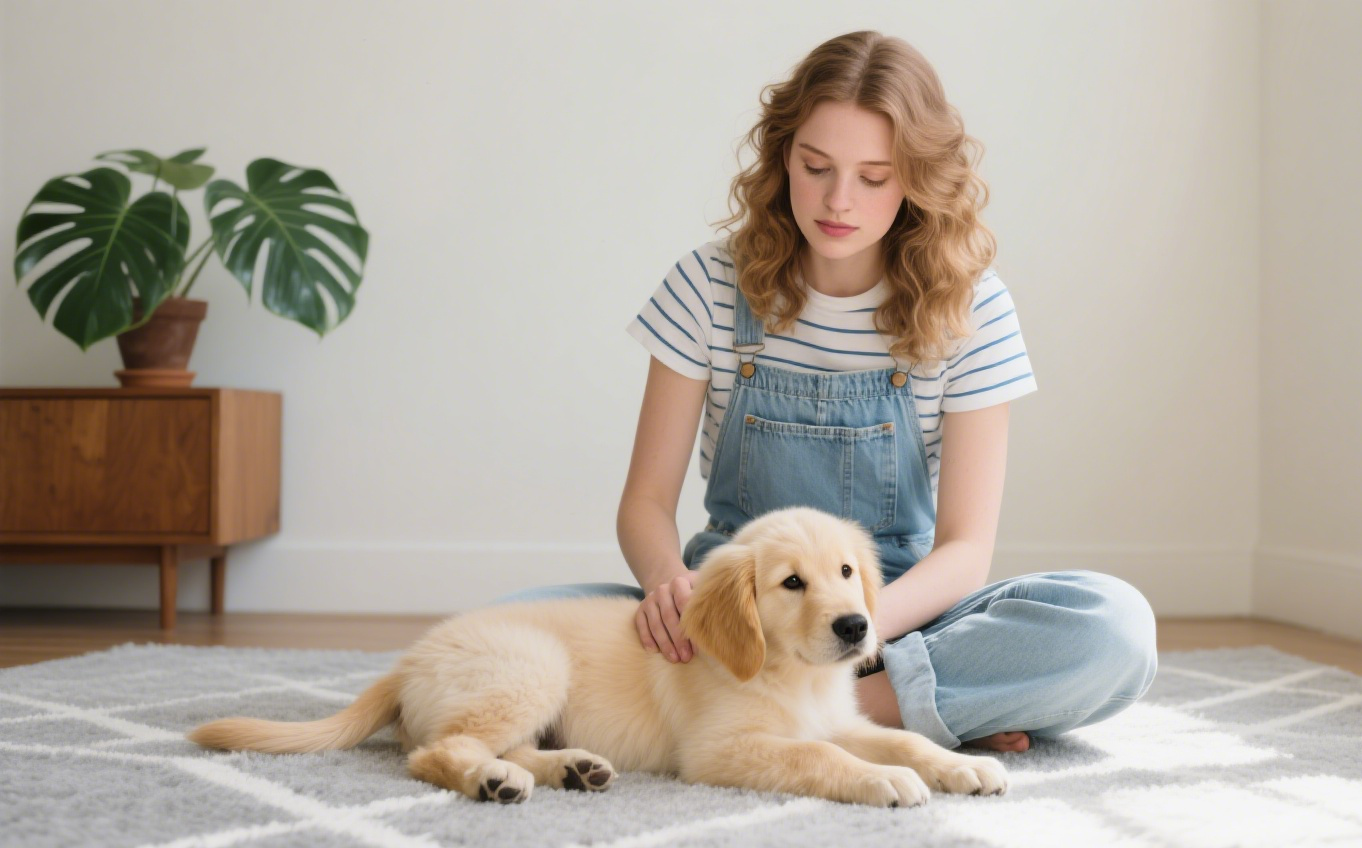Omega-3 rich formulas that actually calmed tummies and brightened coats—curated from what worked for our own dog, Ethan.
Our Story (Ethan & the Salmon Switch)
Ethan’s coat went from “fine” to “whoa, glossy” the month we trialed salmon. We’d spent weeks juggling minor tummy wobbles and dull fur on chicken-based blends. A slow, measured switch to salmon—paired with a simple routine—finally clicked. Stools stayed formed, scratching eased, and that easy morning appetite came back. Below are the salmon options that most consistently felt gentle on his stomach while feeding skin and coat from the inside out.

Red Flags (See Your Vet First)
⚠️ Persistent vomiting, black/bloody stools, rapid weight loss, or extreme lethargy are medical red flags. Please see your veterinarian before diet changes. Food can support recovery, but it should never delay care.
What Worked for Us (Salmon Picks That Stayed Gentle)
On calmer days, Ethan did best with a straightforward, vet-favorite salmon base like Hill’s Science Diet Sensitive Stomach & Skin (Salmon & Vegetable)—digestibility felt predictable, and we saw steady energy. For active weeks and training blocks, Purina Pro Plan Sensitive Skin & Stomach (Salmon & Rice) kept appetite strong without upsetting stools. When we wanted a lighter ingredient feel, Nature’s Recipe Grain-Free Salmon, Sweet Potato & Pumpkin gave us a simple macro profile Ethan enjoyed. On sensitive stretches, a true LID formula like Natural Balance L.I.D. Salmon & Sweet Potato helped us isolate variables. For coat brightness, Wellness CORE (Whitefish, Salmon & Herring) brought a noticeable shine, while Zignature Trout & Salmon (L.I.D.) was our back-pocket option when we needed tight ingredient control without giving up on flavor.
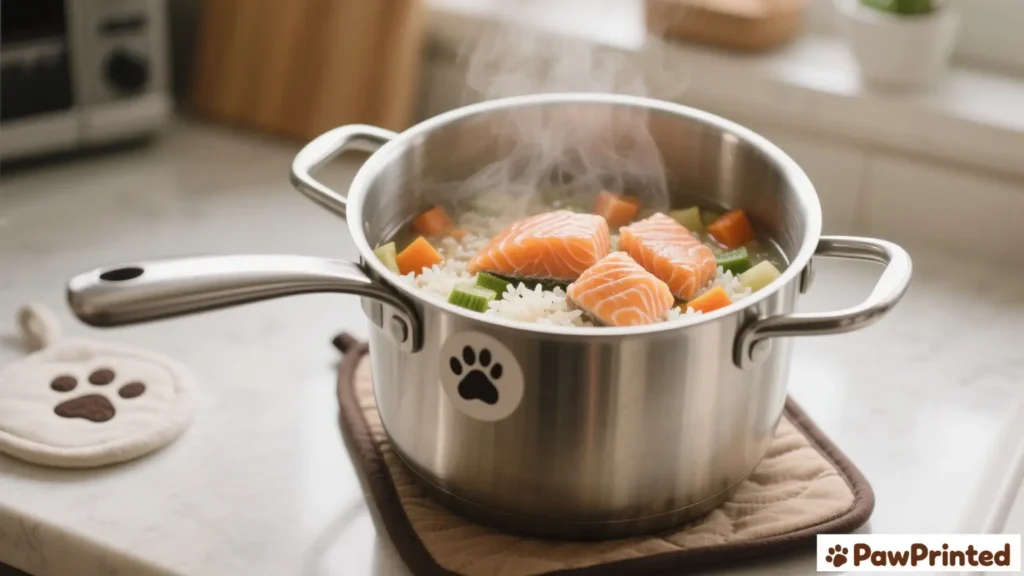
Why Salmon Helps (And When It Doesn’t)
Omega-3s for skin & coat: Salmon is naturally rich in EPA/DHA, which support skin barrier function and coat gloss. AKC’s primer on fish-oil benefits for dogs explains why omega-3s can calm itchiness linked to seasonal irritation.
Digestive ease (for many dogs): Some dogs simply handle salmon better than common proteins. VCA’s guide on food allergies in dogs notes that rotating proteins can help identify triggers—LID salmon diets make that process simpler.
But… “salmon” isn’t a magic wand: Texture, fiber, and formula balance matter. If stools wobble or gas increases, slow the transition and review basics in our Dog Food Transition Guide. If symptoms persist, check our Allergies Hub and Limited Ingredient Dog Food, then speak with your vet. PetMD also outlines when diet trials make sense and how long to give them here.
- Sensitive Stomach Hub
- Supplements for Sensitive Stomach
- Best Dry Food for Sensitive Stomach
- Best Wet Food for Sensitive Stomach
- Dog Food for Allergies
- Dog Food Transition Guide
- Senior Dog Food
- Puppy Dog Food
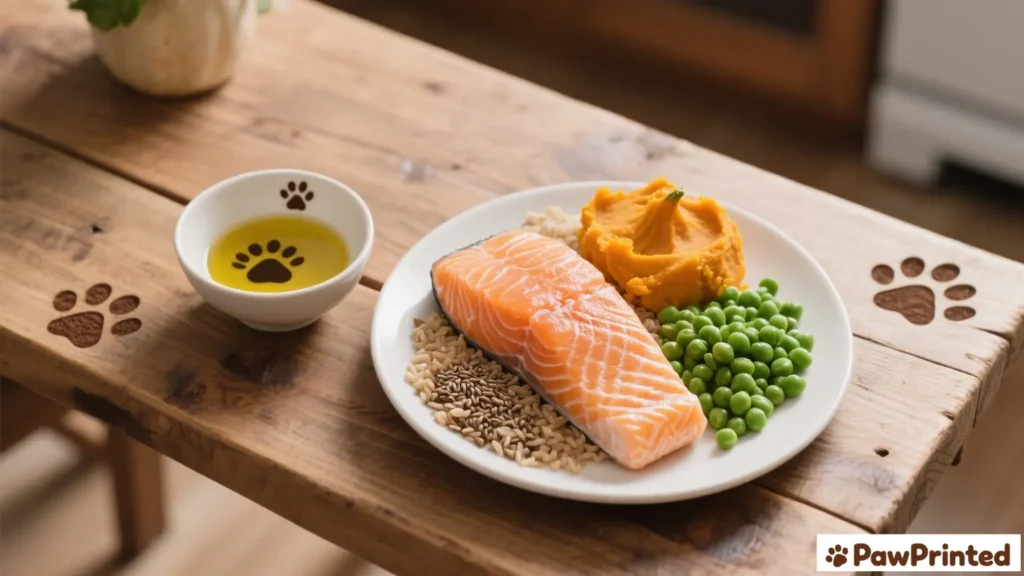
Our Simple Routine (3 Steps)
- Transition slow: 25% new / 75% old for 2–3 days → 50/50 → 75/25 → 100% new. If stools soften, pause at the current ratio for 48 hours (see our transition guide).
- Hydrate and portion: Add warm water to kibble and keep meal sizes steady. Small, regular portions are kinder on sensitive stomachs.
- Support the gut: During switches, consider a vet-approved probiotic routine (details in supplements guide).
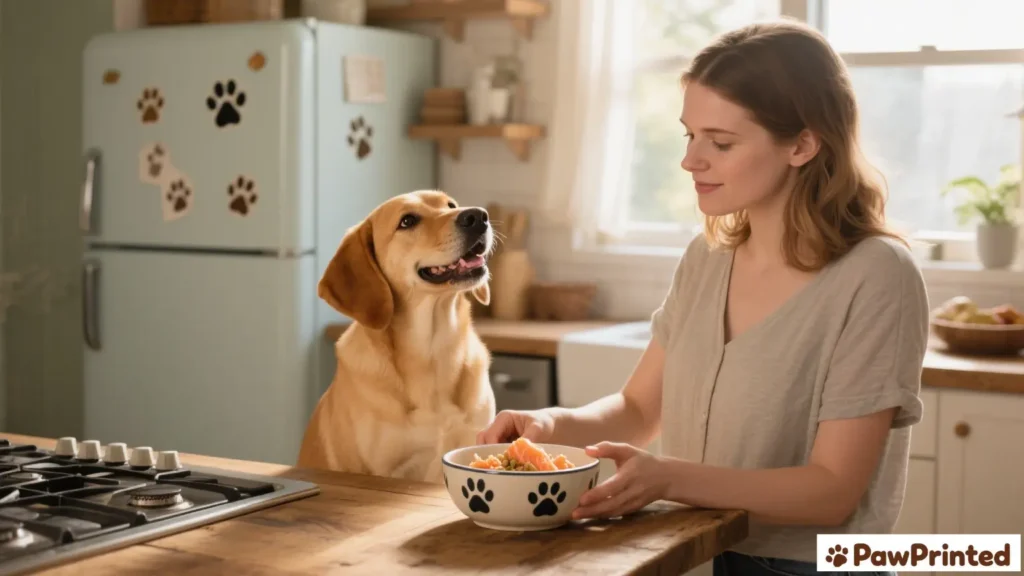
Comparison Table (Quick Picks)
| Option | Why It Helps | Best For |
|---|---|---|
| Hill’s SD Sensitive Stomach & Skin (Salmon) | Vet-favorite digestibility; steady stools | Daily reliability; gentle transitions |
| Purina Pro Plan Sensitive (Salmon & Rice) | Protein-forward with DHA; strong palatability | Active dogs; training days |
| Nature’s Recipe GF Salmon | Straightforward grain-free macro profile | Simple ingredient preference |
| Natural Balance L.I.D. Salmon | Limited ingredients; easy trigger isolation | Allergy trials; sensitive stretches |
| Wellness CORE (Whitefish/Salmon/Herring) | Omega-3 rich blend; coat shine | Skin/coat focus; picky eaters |
| Zignature Trout & Salmon (L.I.D.) | Tight ingredient control without blandness | LID seekers; careful rotations |
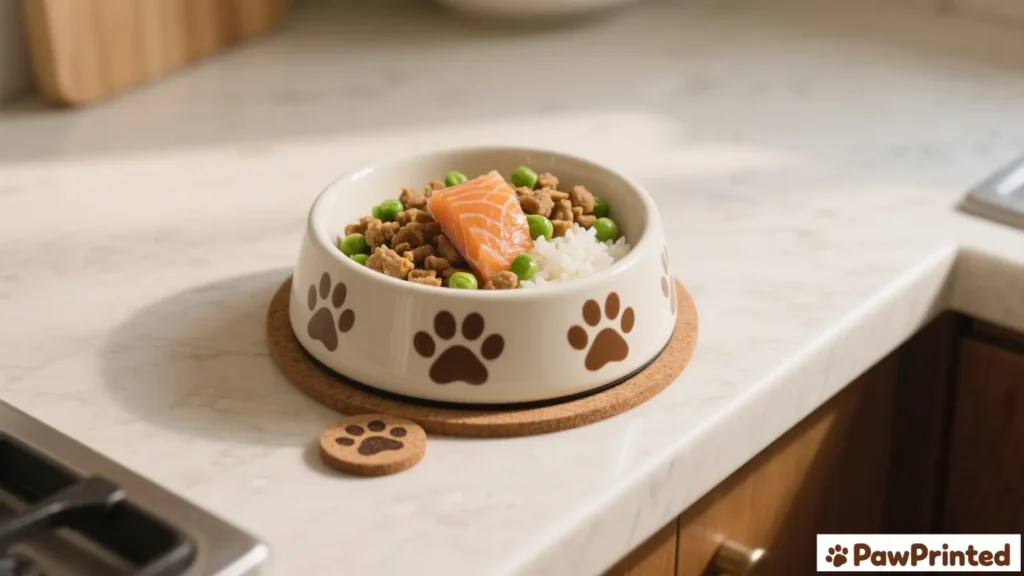
FAQ
Not universally—some dogs thrive on chicken. Salmon’s omega-3s (EPA/DHA) can help calm seasonal itch and support the skin barrier. If your dog scratches persistently, consider a slow diet trial with a salmon or LID formula and track results for 2–4 weeks. See our Allergies Hub for red flags and next steps.
Yes—many dogs do well with planned rotations. Keep transitions slow and change one variable at a time. If you’re troubleshooting stomach upsets, use LID salmon first, then branch to other proteins with our transition plan.
Not by default. Some dogs do great on salmon + rice blends. Choose grain-free only if it better fits your dog’s history and vet advice. Compare examples in our table and see more options in Best Dry Food for Sensitive Stomach.
Stools often stabilize within 7–10 days of a careful switch; coat and skin changes can take 3–4 weeks as new hair grows. If signs worsen or red flags appear, pause diet tweaks and contact your vet. Related reading: Sensitive Stomach Hub.
Use puppy-specific blends or formulas that meet growth standards. For DHA/ARA and Ca:P balance in young dogs, start here: Puppy Dog Food and review feeding with your vet.
Note: If you don’t want to cook daily, check our dry food picks — those were Ethan’s daily backups.
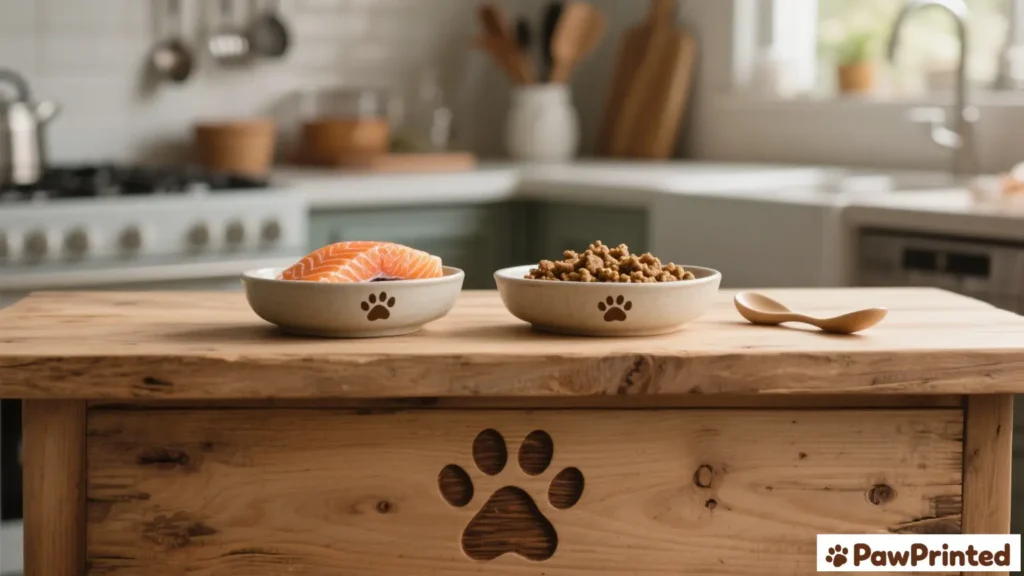
Wrapping It Up
Salmon isn’t a magic fix, but it’s a smart, omega-rich starting point for many dogs with skin or tummy quirks. Keep changes slow, portions steady, and journaling honest. If you’re stuck, begin with a gentle salmon & rice base, then adjust toward LID or higher omega-3 blends as your dog shows you what works.

